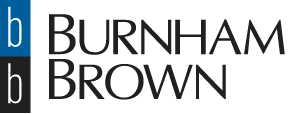June 4, 2009
By:
Senate Bill No. 1420 will add Section 114094 to the California Health and Safety Code regarding food facilities and food labeling. The new law applies to any fast food or chain restaurants with 20 or more locations in California. It is estimated that over 17,000 restaurants will be required to comply with the new law, which has two phases: the first phase, which becomes effective on July 1, 2009 to December 31, 2010, requires the restaurants to provide "in a clear and conspicuous manner" a brochure at a point of sale where a customer makes the order. The brochure must provide the total calories, sodium, saturated fat and carbohydrate amounts for each menu item. The brochures must be made available at the tables for sit-down restaurants. Drive-thru restaurants must notify the customer of availability of the brochure at the location where the customer places his or her order.
The second phase will be effective January 1, 2011, and requires the restaurants to list the calories on the menus and menu boards next to each menu item. The drive-thru restaurants must provide notice to the customers where the customer's order is made and inform the customer that such brochure is available upon request.
FOOD FACILITIES EXCLUDED FROM COMPLIANCE WITH THE NEW LAW
The new law specifically excludes certified farmers markets, commissaries, grocery stores (which includes convenience stores), licensed healthcare facilities, mobile support units, public and private school cafeterias, restrictive food service facilities, retail stores which obtain the majority of sales from a pharmacy, and vending machines.
SIMILAR NEW YORK CITY FOOD LABELING ORDINANCE
New York City last year approved a very similar ordinance requiring fast food and other chain restaurants to provide calorie and nutrition information on menus and menu boards. The New York Restaurant Association challenged the ordinance based on the federal pre-emption by the Federal Nutrition Labeling and Education Act of 1990 and on the restaurants' First Amendment rights. The Federal Court for the Southern District of New York denied the New York Restaurant Association's request for relief. The New York Restaurant Association further appealed the order of the Southern District Court of New York to the United States Court of Appeals, Second Circuit, which in its order of February 17, 2009 upheld the New York City ordinance. The Circuit Court discussed that the New York ordinance requires about 10% of restaurants in New York City, including chains such as "McDonalds, Burger King and Kentucky Fried Chicken," to post calorie information on their menus and menu boards. The court stated that "New York City merely stepped into a sphere that Congress intentionally left open to the state and local governments." The court also held that the restaurants' constitutionally protected commercial speech under the First Amendment is not violated when "the law in question mandates a simple factual disclosure of caloric information and is reasonably related to the New York City goal of combating obesity."
Since 1994, the federal law has required nutritional labeling on all packaged foods.
Currently, more than 20 states, cities or counties have introduced bills similar to California Senate Bill 1420 regarding restaurant food labeling.
Ulla Pajala is a member of Burnham Brown's Retail Industry Group. Her practice focuses on general civil litigation with an emphasis in toxic tort and environmental matters. She can be reached at 510.835.6731 or upajala@burnhambrown.com

